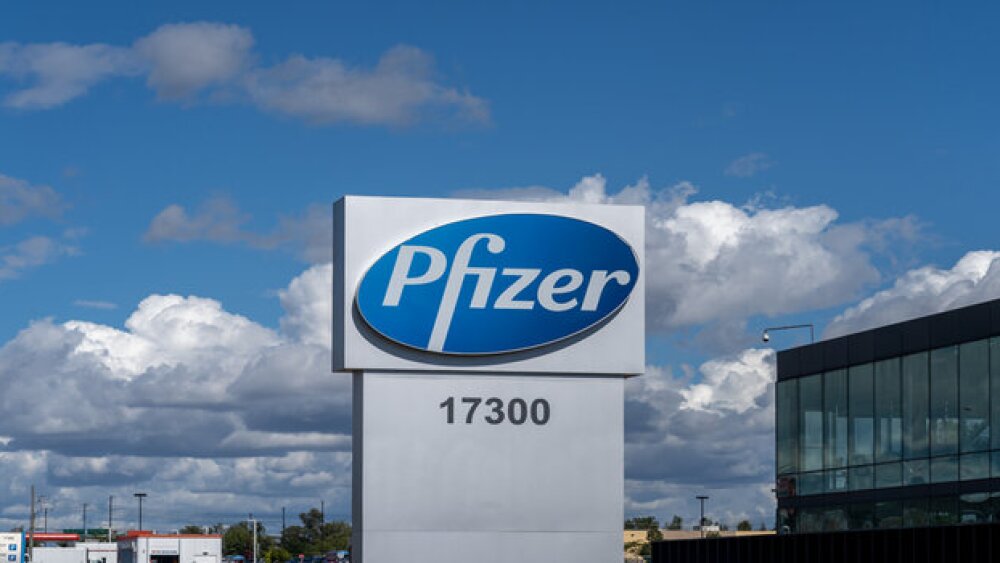Suddenly one obesity asset has come to define Amgen but executives see a fuller portfolio that will bring the big biotech into the future.
Amgen went into 2025 on the back of 22% revenue growth driven by a portfolio of 14 products that could generate blockbuster sales. Yet, one investigational drug candidate, MariTide, dominates chatter about the company, with shifts in sentiment about the obesity prospect adding or wiping billions of dollars from the biotech’s value. The wild swings raise a question: Is one drug really going to be Amgen’s future?
BMO Capital Markets analysts characterized the attention investors pay to the Amgen obesity program as a “hyper focus on MariTide” in a note to investors. This focus may reflect MariTide’s unusually high sales ceiling. Evaluate Pharma has tipped MariTide sales to hit $3.7 billion in 2030, a forecast that suggests it will be an important but not company-defining product. Yet, with Evaluate predicting GLP-1s will account for 9% of all prescription drug sales by 2030, there is scope for MariTide sales to go much higher if Amgen gains an edge over incumbents Eli Lilly and Novo Nordisk.
After mixed data raised questions about MariTide’s tolerability, TD Cowen analysts said in a note to investors that expectations for MariTide are “relatively guarded.” These expectations, which are informed by questions about whether the drug can hit the right balance between efficacy and tolerability, put the onus on the rest of Amgen’s pipeline and portfolio to show the company has a bright future.
Amgen’s Catalysts for 2025
BMO analysts flagged readouts from trials of dermatitis candidate rocatinlimab as two of Amgen’s big clinical updates for the second half of 2025. Amgen paid Kyowa Kirin $400 million upfront to partner on the development of the anti-OX40 antibody in 2021. The partners went on to start eight Phase III studies to assess the drug candidate in more than 3,300 patients with moderate-to-severe atopic dermatitis.
Data from the ASCEND trial released today pointed to the drug’s long-term safety and durable efficacy, with Jefferies analysts telling investors that the readout “improves our confidence in Roca’s approvability.” Meanwhile, the ASTRO trial is also due to readout by the end of the year with data on how the antibody performs in adolescent patients. Analysts are looking to the data for insights into how the drug candidate compares to rival drugs such as Regeneron and Sanofi’s Dupixent.
After seeing data from another Phase III trial, TD Cowen analysts wrote that the antibody “showed good efficacy and better than expected tolerability.” However, the analysts added that rocatinlimab is “unlikely to unseat Dupixent and will likely face stiff competition from [Sanofi’s] amlitelimab.” BMO analysts said rocatinlimab “could see use behind Dupixent” in atopic dermatitis.
A readout is also expected for approved cholesterol drug Repatha in 2025. BMO analysts named the cardiovascular outcomes data as another key catalyst for the company in the second half of the year. Positive data could support further growth of the PCSK9 inhibitor, which has recovered from a slow start to become a key product for Amgen. Sales increased 31% to $696 million in the second quarter.
Phase III data on bemarituzumab in gastric cancer are due around the end of the year. TD Cowen analysts said the data on the anti-FGFR2b antibody “ought to add another growth driver right after Uplizna is approved for generalized myasthenia gravis (gMG).”
The FDA is set to decide whether to greenlight Uplizna in gMG in December. The anti-CD19 antibody won FDA approval in the fibro-inflammatory condition IgG4-RD this year, adding to an earlier authorization in neuromyelitis optica spectrum disorder. TD Cowen analysts anticipate “a solid launch” in IgG4-RD and gMG and see peak sales of $2 billion to $3 billion for the Uplizna franchise.
The Tortoise and the Hare
Biosimilars are another piece of the portfolio. Amgen said in January that it is on track to grow biosimilar sales to more than $4 billion by 2030. The company is developing a copy of the intravenous form of Merck’s Keytruda, which is set to lose patent protection in 2028. The biosimilar could help Amgen toward the sales target, but the company is also encouraging investors to look beyond any one product.
“What’s maybe underappreciated is the portfolio effect. It’s true that any individual biosimilar will launch and then you can face further competition and price erosion,” Justin Claeys, VP of investor relations at Amgen, said at a BofA Securities event in May. “On the other hand, with these waves of launches that build on each other, in aggregate it’s actually quite a healthy business.”
The steady biosimilar business contrasts with the potentially explosive growth of MariTide. Amgen is betting big on the obesity prospect, starting five Phase III studies in the first seven months of 2025. The trials are evaluating the effect of MariTide on weight loss and cardiovascular outcomes in patients with overweight or obesity and various comorbidities.
MariTide targets the GLP-1 and GIP receptors. Both MariTide and Eli Lilly’s Zepbound are agonists of GLP-1, but Zepbound activates GIP, potentially lessening nausea and suppressing appetite, whereas MariTide blocks the receptor to try to reduce fat accumulation.
Any release of obesity data has been sparking a frenzy at the markets of late, with even bigwigs like Lilly and Novo suffering share declines when their readouts didn’t meet analysts’ sky high expectations. Amgen found this, too, in November 2024, when Phase II results for MariTide showed weight loss of up to 20%—compared to expectations as high as 25%. Amgen’s shares declined 11% on the news.
Analysts have also flagged potential tolerability issues with Amgen’s candidate. In response, the company has proposed a three-step dose escalation strategy.
Amgen is planning to publish additional Phase II results on MariTide in the fourth quarter. Recent history suggests the data could spark movements in the biotech’s share price, but analysts are factoring a wider set of programs into their assessments. After Amgen posted second-quarter results in August, TD Cowen analysts highlighted the attractiveness of the company’s “broad growth portfolio.”
Editor’s note (Sept. 10): This story was updated to include today’s trial readout for rocatinlimab.






